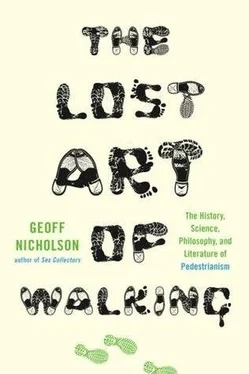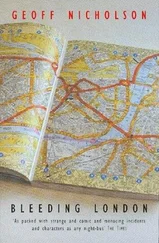♦
A week later I had surgery at the Good Samaritan Hospital on Wilshire Boulevard. My doctor had a signed photograph of Slash from Guns N’ Roses on her wall, and Slash was obviously happy with the service.
Once I’d been operated on, put in a cast and splinted up, sent home, and begun the recovery period, I started meeting more people who asked what I’d done to myself. I sensed that they wanted to hear stories of knife fights, car wrecks, overturned Jet Skis, and I didn’t want to disappoint them, though I didn’t want to lie. I found myself saying, ‘The break was spectacular, even if the cause was pedestrian’.
And there was always the big L.A. question: ‘Are you OK to drive?’ Drive? Hell, I had problems enough walking. As a man working on a book on the subject, I felt I had a duty to try to keep pounding the streets, even with a broken arm. It didn’t sound so hard. But walking with a broken arm is much more difficult than you, or certainly I, might imagine. For one thing, despite serious quantities of painkilling opiates, the arm continued to hurt like hell. There’s a rich tradition of walking while enjoying opiate-induced sensory derangement — Baudelaire, De Quincey, Coleridge — but I didn’t feel happily deranged — I simply hurt. And even if the arm didn’t hurt when I set off walking, by the time I’d gone a few hundred yards the blood was circulating faster and setting off freshly revealed twinges and spasms.
More than that, walking while nursing an injured arm in a cast and sling throws off your balance and distorts the geometry of the walking body, creating various tensions and asymmetries that in themselves create further pain. My broken arm ached and it made the rest of my body ache, too. And that didn’t end even when the cast came off. I was left nursing this tender, half-formed thing, something soft and without muscle: it was like having a week-old puppy dangling at the end of my arm, although in this case the puppy actually was the arm.
Worse, having fallen down once, I feared that I could all too easily do it again. It seemed my walking capabilities were no longer to be trusted. I still went out walking, but with a new attention to detail. I didn’t go very far, and I made sure that I now wore ground-hugging, butt-ugly shoes. I walked more slowly, obsessively looked where my feet were going, and regarded curbs, steps, and changes in gradient as obstacles set specifically to undo me. Who knew walking was such a confidence game? Who knew it was so complicated and risky?
Well, quite a few people it turned out. I suddenly discovered that falling down while walking wasn’t such a rare event. My friends and acquaintances turned out to be a poorly balanced crowd, and many of them had stories about getting a foot caught in a pothole in the street, losing their footing on slippery or uneven sidewalks, tumbling off wet stepping stones, or having pratfalls while walking across gravel driveways or parking lots. Sometimes, like me, they fell for no apparent reason whatsoever.
By some accounts, walking itself was a series of falls, a precarious balancing act that had the walker standing on one leg for most of the time, constantly pitching himself forward, transferring energy and weight in a reckless and dangerous manner, avoiding disaster only by constantly getting a foot down in the very nick of time.
Others said that spending your whole life on two legs was a downright odd thing to do. Plenty of mammals stand on two legs once in a while, but humans are the only ones ridiculous enough to do it all the time. The body just wasn’t designed for it. All those bad backs and knees and feet and hips — we’d have had none of those things if only we’d remained on all fours. If a quadruped missed a step with one foot, there were three others right there to make up the difference. What was the big deal about bipedalism, anyway?
♦
At one time, the explanation for bipedalism seemed simple enough, and was demonstrated in that old, familiar illustration: a line of rising, ever-more-human-looking creatures, a common ancestral ape at the far left-hand side, some chimplike critter walking on his knuckles in the middle, and a naked, spear-carrying Homo sapiens at the far right.
The text that accompanied this drawing would have told you that our ancient primate ancestors lived in trees and moved on all fours until a more sophisticated primate appeared, called Ramapithecus , that could stand up at least part of the time and could pick up things with its hands, probably rocks to throw at its enemies. Then, about five million years ago, Australopithecus came on the scene, tiny-brained but a proper upright walker who probably used stones or bones for specific tasks, though these didn’t quite constitute ‘tools’. Next, two and a half million years ago, along came ‘1470 man’ with a better brain than any ape, and with the genuine ability to make and use tools. Standing on two legs is a great help when you want to use tools. Homo erectus arrived about half a million years ago, Homo sapiens , 250,000 years after that. The move was always onward and upward: four legs good, two legs better.
This narrative fits with what is known as the ‘savannah hypothesis’, which suggests that our ancestors were perfectly happy living in trees and would have remained there, but some profound ecological change occurred, leading to a catastrophic deforestation. Swinging from one tree to another was no longer possible because the trees were too far apart, and so a new form of travel was required. This new form involved some trial and error. At first we scrabbled on all fours, then raised ourselves a little, using our forearms and knuckles as necessary, and finally we made the breakthrough: we stood up and walked on two legs because that was the most efficient way of getting from nearby tree A to distant tree B.
Other theories of bipedalism suggest that walking on two legs simply uses less energy than walking on four: it’s claimed that walking humans use 75 percent less energy than chimpanzees, for instance, and evolution favors efficiency. Another theory, the ‘thermoregulatory model’, asserts that standing upright is advantageous because it keeps the body cooler, placing it in the vicinity of fresh, moving air. A different theory attributes bipedalism to changes in social and reproductive habits in early hominids. At a certain point in human development, males acquired the nurturing urge. They wanted to care for their families and to provide for them. They went out foraging and brought back what they’d gathered, carrying it in their arms. Since two limbs were engaged in the carrying, they were forced to walk on the other two.
These narratives don’t strike me as mutually exclusive, though naturally there is fierce debate among supporters of the different theories. However, as a result of research done by two English scientists, Robin Crompton and Susannah Thorpe, the whole bipedal apple cart has now been upset. In the early 2000 s, Crompton and Thorpe spent a year in the rain forests of Sumatra, studying and filming orangutans, a species that spends its entire life in trees, and therefore, one might have thought, a species with absolutely no use for bipedalism.
Well, it turns out the Sumatran orangutans are extremely bipedal. They may not walk on the ground, but they constantly stand on two legs and walk along tree branches, using their arms for balance and for gathering food. The conclusion is that we didn’t come down from the trees and gradually adapt to walking on two feet, but that bipedalism was already part of the repertoire. Knuckle walking, therefore, wasn’t an intermediate stage but a later development, necessitated in chimpanzees and gorillas because they’re anatomically unable to straighten their legs.
Читать дальше












